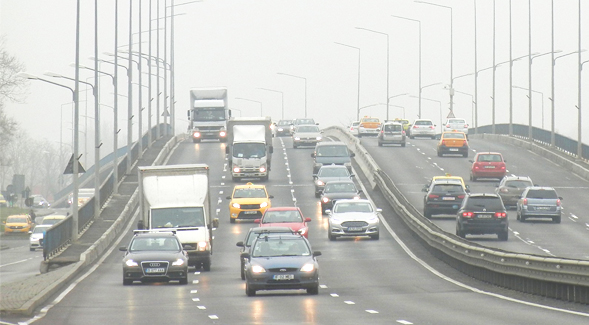Poor Hit Hardest By Extreme Heat and Ozone
On hot days, the recurring combination increases hospitalizations in low-income ZIP codes more than other areas.

From May to September, many parts of California experience extreme heat, often combined with higher ozone pollution from vehicle traffic. This leads to increased hospitalizations for respiratory issues.
When researchers examined hospitalization rates by ZIP codes across the state, they found lower income areas suffered a disproportionate share of respiratory infections and pulmonary distress.
Poorer areas were characterized by a triple whammy of lower median income, higher unemployment rates, and other pollutants, in addition to combined heat and ozone exposures.
The study identified hotspots throughout the Central Valley, areas of San Diego County near downtown, and such places as San Bernardino, where Los Angeles Basin smog is often trapped by surrounding mountain ranges, among others.
“By estimating ZIP code level risks, we can identify characteristics that make an area more susceptible to these impacts, and this information can be used to inform early warning systems and prioritize resources to protect populations at increased risk of experiencing a health burden,” said lead author Lara Schwarz, a fourth year public health Ph.D. student in the joint doctoral program between San Diego State University and the University of California San Diego.
Initially the researchers focused on examining the combination of extreme heat and ozone exposure and its impact on health burdens. When they found widespread variation between ZIP codes for the 817,000 hospitalizations for respiratory issues that occurred between May and September from 2004 through 2013, they delved deeper to understand what was driving these differences.
Their discovery of a higher burden in lower-income areas could enable more targeted public health efforts because of its unprecedented consideration of two common hazards in tandem and its detailed breakdown of where they are most likely to cause problems. Previous studies had tended only to evaluate city- or regional-level health trends.
Results were published May 24 in the journal Proceedings of the National Academy of Sciences. The research was funded by the Office of Environmental Health Hazard Assessment, a division of the California Environmental Protection Agency.
As climate change increases the frequency and length of heat waves in California and other parts of the world, the researchers expect it will tag team with increased ozone exposures, causing public health burdens more often.
“Understanding the health impacts of compounding environmental events such as extreme heat and various air pollutants like tropospheric ozone becomes a priority in a changing climate,” said co-author Tarik Benmarhnia, a climate change epidemiologist with UC San Diego’s Scripps Institution of Oceanography. “Such events are more frequent, intense and tend to co-occur, potentially creating synergistic effects on population health impacting the most vulnerable communities.”
Ozone is a highly reactive gas composed of three oxygen atoms, found both in the earth’s upper atmosphere or stratosphere, and lower atmosphere or troposphere due to the reaction of hydrocarbons to sunlight, especially during hot days. It is both naturally occurring and man-made due to pollution such as car exhaust, which produces hydrocarbons.
The study focused on ground level tropospheric ozone which can exacerbate asthma and other respiratory conditions among vulnerable people and is more prevalent in urban areas with more traffic. Extreme heat can similarly affect respiratory health by itself or in combination with high ozone levels.
The researchers note that vulnerability to the excessive heat and ozone combination seems to be diminished in wealthier ZIP codes, which could be due to better access to health care, lower stress levels, and more exercise.
Further research on understanding if heat is a driver of increased ozone and how these factors come together, and expanding the study beyond California to other regions will be important next steps. Schwarz herself will focus on border health and impacts of extreme heat and wildfire exposure.
Co-authors include Kristen Hansen and Alexander Gershunov with UC San Diego, Anna Alari of Sorbonne University in Paris, Sindana Ilango with the University of Washington who is a former SDSU-UCSD joint doctoral program graduate, Nelson Bernal with University of Brasilia in Brazil, and Rupa Basu with the California Environmental Protection Agency.



